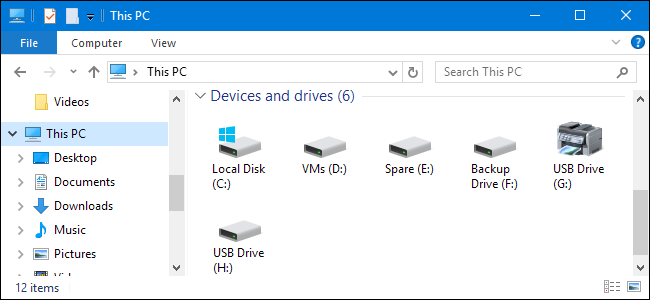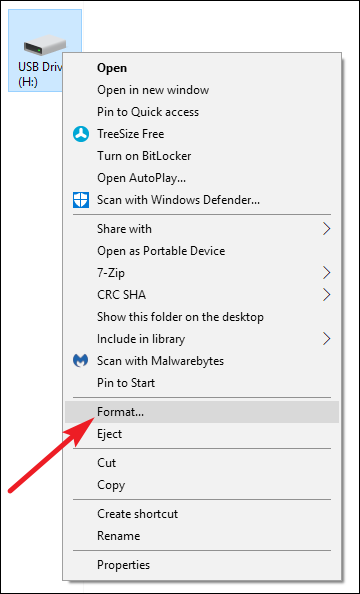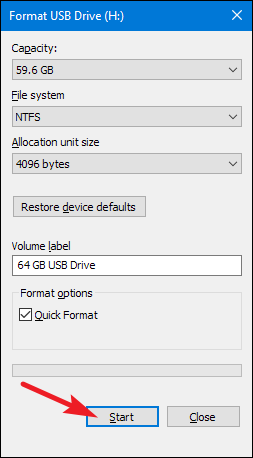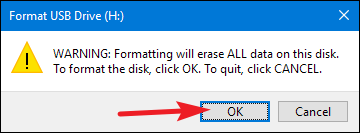
安卓格式化和擦除分区

Most hard drives come “preformatted” and ready to use these days. But you occasionally might need to format one yourself.
如今,大多数硬盘驱动器都已“预格式化”并可以使用。 但是您有时可能需要自己格式化。
For example, formatting typically removes most of the data on a drive, making it a quicker way to erase a large drive than simply deleting everything on it. The biggest reason for reformatting, though, is if you want to change the file system used on the drive to something else. Windows makes several file systems available to you—including FAT32, exFAT, and NTFS—and they all have their advantages and disadvantages. While you’ll typically use NTFS for internal drives on a Windows PC (and, in fact, you’re forced to for your system drive), choosing a file system matters more when you’re formatting an external USB drive.
例如,格式化通常会删除驱动器上的大多数数据,这使擦除大型驱动器比简单地删除所有驱动器更快捷。 但是,重新格式化的最大原因是是否要将驱动器上使用的文件系统更改为其他格式 。 Windows为您提供了多个文件系统,包括FAT32,exFAT和NTFS ,它们各有优缺点。 虽然通常在Windows PC上将NTFS用于内部驱动器(实际上,您不得不将其用于系统驱动器),但是在格式化外部USB驱动器时,选择文件系统更为重要。
Note: Formatting using most format utilities does not technically erase your drive. Instead, it marks the space your data used as available for writing to. So while you could still recover data from drives that have been formatted using the technique we’re discussing here, it requires a special utility and some time. For practical purposes, you can consider the data gone when you format a drive. If, however, you need to securely erase the data from a drive—say you’re tossing the drive or giving it away—consider a third-party tool like Eraser or DBan.
注意:使用大多数格式化实用程序进行格式化在技术上不会擦除驱动器。 相反,它会将您的数据标记为可用于写入的空间。 因此,尽管您仍然可以从使用我们在此讨论的技术格式化的驱动器中恢复数据,但这需要一个特殊的实用程序和一些时间。 出于实际目的,您可以考虑格式化驱动器时丢失的数据。 但是,如果您需要安全地擦除驱动器中的数据(例如,您要扔掉驱动器或将其赠送),请考虑使用第三方工具,例如Eraser或DBan 。
Fortunately, Windows makes formatting drives pretty easy. You can format a drive—and perform other functions like creating and deleting partitions—using Windows’ Disk Management tool. But if formatting is all you want to do, there’s an easier way.
幸运的是,Windows使格式化驱动器变得非常容易。 您可以使用Windows的磁盘管理工具格式化驱动器,并执行其他功能,例如创建和删除分区。 但是,如果您只想格式化,那是一种更简单的方法。
Open File Explorer to the “This PC” view so that you can see all your drives easily.
打开文件资源管理器,进入“此PC”视图,以便轻松查看所有驱动器。

Right-click any drive in File Explorer, and then click the “Format” option.
用鼠标右键单击文件驱动器中的任何驱动器,然后单击“格式”选项。

The “Format” window offers a number of options:
“格式”窗口提供了许多选项:
Capacity: This box shows the capacity of the drive. The dropdown shows only the drive you selected, so there’s not much to do with this option other than make sure you’ve got the right drive selected.
容量:此框显示驱动器的容量。 下拉列表仅显示您选择的驱动器,因此,除了确保您选择了正确的驱动器之外,与该选项没有太大关系。
File system: Depending on the size of the drive you’re formatting, you’ll see a few options here, including FAT32, exFAT, and NTFS. If you’re formatting a drive over 32 GB, you won’t see the FAT32 option here, but we’ve got a guide to help you work around that if you need to.
文件系统:根据要格式化的驱动器的大小,您将在此处看到一些选项,包括FAT32,exFAT和NTFS。 如果您要格式化超过32 GB的驱动器,则在此处看不到FAT32选项,但是如果需要,我们会提供指南来帮助您解决该问题 。
Allocation unit size: The allocation unit size represents the maximum cluster size on a drive—the smallest units into which data are broken. We recommend leaving this value at its default of 4096 unless you have good reason to change it.
分配单元大小: 分配单元大小表示驱动器上的最大群集大小,即数据分解成的最小单元。 我们建议将此值保留为默认值4096,除非您有充分的理由进行更改。
Restore device defaults: Use this button to change all the options in the “Format” window back to the default for whatever drive is selected.
恢复设备默认设置:使用此按钮可以将“格式化”窗口中的所有选项改回为所选驱动器的默认选项。
Volume label: Type a name for the drive as it will appear in File Explorer.
卷标签:键入驱动器的名称,该名称将出现在文件资源管理器中。
Quick format: Select this option to perform a high-level format, which works quickly and just readies the drive with a new file system. Clear this option to perform a low-level format that takes longer, but checks out every sector of the drive. A low-level format is a good option if you’re concerned about the reliability of the drive.
快速格式化:选择此选项可以执行高级格式化,该格式可以快速运行,并且只需为驱动器准备新的文件系统即可。 清除此选项可以执行花费更长时间的低级格式化,但可以检出驱动器的每个扇区。 如果您担心驱动器的可靠性,则低级格式是一个不错的选择。
When you’ve got all your options set the way you want them, click “Start” to continue. Remember, this will erase the entire drive, so make sure you have anything you need backed up!
完成所有选项的设置后,请单击“开始”继续。 请记住,这将擦除整个驱动器,因此请确保您有任何需要备份的内容!

Windows warns you’ll lose any data on the drive you’re about to format. Click “OK” to start the format.
Windows警告您将要格式化的驱动器上的所有数据都会丢失。 点击“确定”开始格式化。

When it’s done, you’ll be able to access your newly formatted drive in Windows.
完成后,您将可以在Windows中访问新格式化的驱动器。
翻译自: https://www.howtogeek.com/317762/how-to-erase-and-format-a-drive-in-windows/
安卓格式化和擦除分区






















 被折叠的 条评论
为什么被折叠?
被折叠的 条评论
为什么被折叠?








